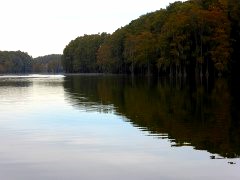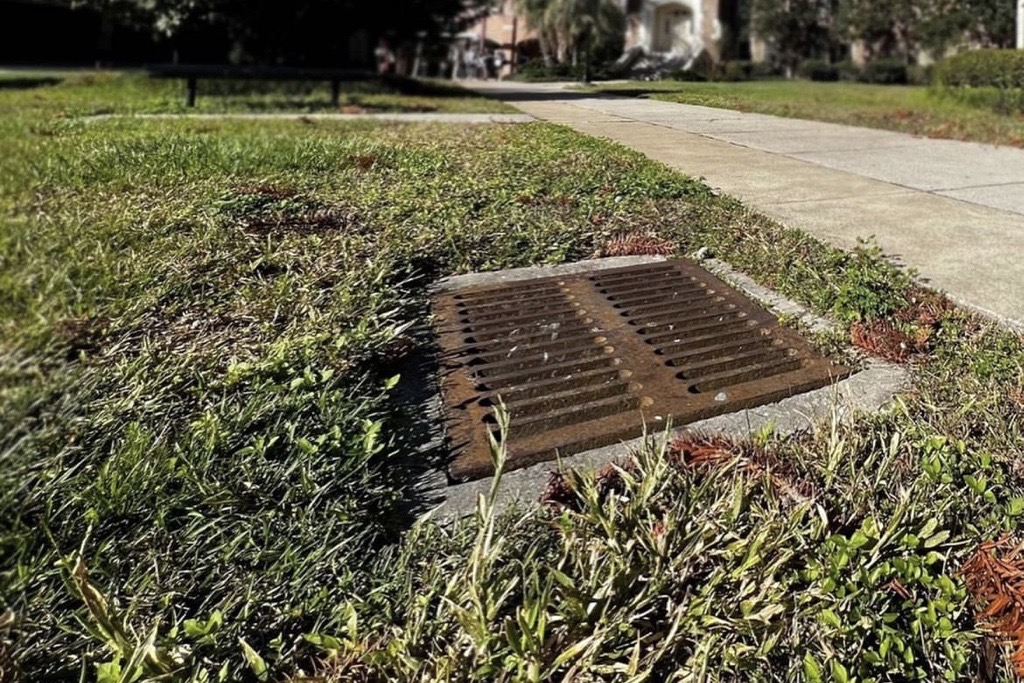
Responsible water management is a critical aspect of sustainability at Florida State University. FSU is located in the Wakulla River watershed. This means that our stormwater flows through stormwater drains to Lake Munson and then to Wakulla Springs. Eventually, our runoff can have an impact on the Gulf of Mexico after it flows 11 miles down the Wakulla River. Campus stormwater is also absorbed into our groundwater, the Florida Aquifer, which supplies 90% of Florida’s drinking water.
There are ample opportunities around campus for students, faculty, and staff to conserve water. Ongoing efforts across campus aim for effective and sustainable management of stormwater, improvement of local water bodies, and minimization of water usage in classrooms, residence halls, and landscape projects.
Water conservation on campus
Waterwise Sensors
To avoid automatic irrigation of plants and green spaces around campus during rainy periods, shut off sensors automatically detect when it’s raining and shut off the irrigation, which saves money and water. Flow meters, which are being increasingly installed, measure the flow rate of water to immediately detect if a leak has sprung and prevent gallons from being wasted.
Low Irrigation planting
Plants that require minimal to no watering, such as aloe, olive, and yucca, are planted around campus. The Ground Crew’s track their daily work through a coordinated smart irrigation system that allows employees to document and monitor which areas have already been watered, and for how long, which prevents over-watering and waste. Campus focuses on planting native and/or drought tolerant plants.
Stormwater management
Stormwater management is a crucial component for the control of runoff and pollution. FSU is in a region that is important in many aspects of water management for this region of the state. Stormwater from our campus flows into the regional retention facilities south of campus and eventually joins other sources that fl

ow into the Gulf of Mexico or the Florida Aquifer. Stormwater management at FSU has a direct impact on the health of various river and lake ecosystems, Gulf of Mexico ecosystems, as well as the drinking water supply for the state.
FSU has several initiatives to regulate its stormwater runoff and water quality. On campus property, FSU facilities maintains multiple retention ponds and water conveyances (permanent waterways), which hold and help transport the runoff from rain traveling over surfaces like roads, buildings, and sidewalks where it can’t soak into the ground. You may also notice signs on all major storm drains, and Facilities and Sustainable Campus both help run educational campaigns on stormwater impact and best practices.
Designing for water conservation
The design code calls for all new buildings to be equipped with low flow fixtures for sinks and toilets.
Air conditioning systems are cooled with well water instead of cooling towers (which can lose millions of gallons through evaporation)
Hydration stations
New campus buildings are being equipped with hydration station water fountains, which make it easy and fast to refill a reusable bottle. This drastically cuts back on waste entering the landfill by avoiding the use of plastic bottles (more than 3 million bottles have been avoided). To date, over 200 hydration stations have been installed.
water quality
You can find more information on Tallahassee water quality here and can read the latest Tallahassee Water Quality Report here.

